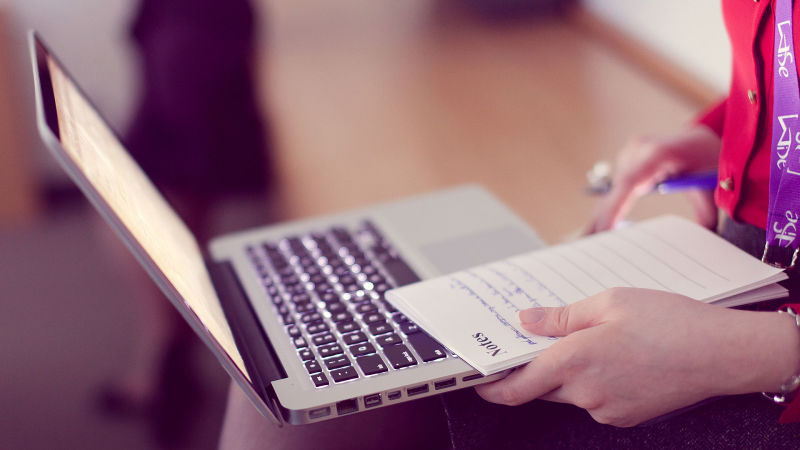“Students who took notes on laptops tended to transcribe the content verbatim,” Mueller said. Those students took many more notes, but seemed to process what they heard much less. In a test taken a few minutes after completing the lecture, students who had taken notes using longhand performed much better. The difference was particularly striking on conceptual questions, where students had to take two pieces of information they’d heard in the lecture and synthesize them into a conclusion.
The researchers then tested another intervention, telling a third group of students taking notes on a computer that verbatim notes aren’t a good way to remember and that they should slow down. The other two groups remained the same as in the first study. The intervention group performed almost exactly the same as the computer note-takers who hadn’t received the intervention, leading Mueller and Oppenheimer to believe that simply telling students not to take notes verbatim doesn’t work.
Since the verbatim note-takers were recording more information than those taking longhand notes, Mueller reasoned that maybe that group would do better if given a chance to study their notes. So in a third study, the researchers asked both groups of note-takers to come back a week later, review their notes for 15 minutes and then take the test.
To Mueller’s surprise, the longhand note-takers still performed better. She also hypothesizes that since longhand note takers had to be more selective about what they wrote, they had processed the information better as it came in, making the recall easier.
These findings align with neuroscience research on memory reconsolidation. When information is called up into the short term memory after having been hardwired into the long term memory, it sticks better the second time.
“If you processed [the information] as it was coming in, then there’s more in your brain for the refresher to hang on to,” Mueller said.
Making it Stick in the Classroom
The typing versus handwriting debate recalls a related, heated discussion over whether students should continue to learn handwriting. While the research is not conclusive, several researchers contend that writing by hand stimulates special neural circuits, leading to stronger reading ability, new idea generation and retention of information.
Mueller thinks there’s still hope for digital note-taking, but says students must be taught how to slow down and process information as they take it in. She thinks there could be promise in stylus technology, which would slow the pace at which a person can take notes, but would still allow for digital storage.
Some educators are taking long form notes to new levels, embracing the idea of sketchnotes, in which the ideas presented in a lecture are captured as a combination of words and images.
“I sat through two 45-minute lectures in high school social studies and not only was I super focused because I was doodling, I could also basically give the lecture afterwards,” said Shelley Paul, who at the time was director of learning design at Woodward Academy. “And if I look at the doodle again today for three to four minutes, I can basically remember it all again.”
Paul admits it can be hard to keep up with a fast paced lecture, but even the things she decides not to depict end up getting connected to the images she does draw. She’s been implementing the practice with students who love the freedom to doodle in class and who are making great connections between information in the process.
While unconventional, drawing as note-taking makes sense based on memory research, which shows that if multiple ideas can be condensed into an image, the brain stores all those related ideas as one. The image acts as a zip file for multiple ideas, helping to fit more into the limited short term memory.


